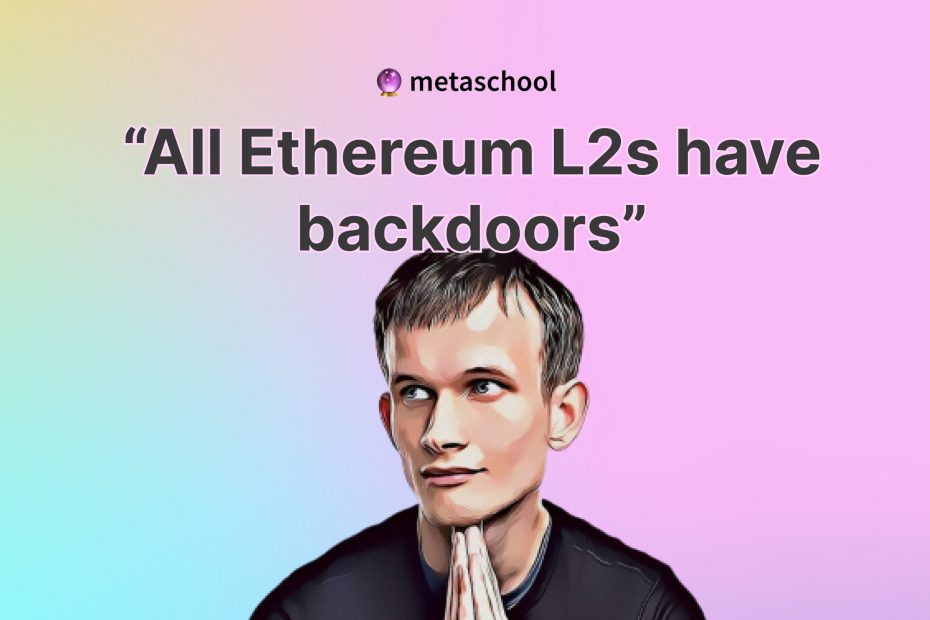Table of Contents
Vitalik Buterin, founder of Ethereum, has recently admitted that Ethereum-based Layer-2 blockchains and rollups have ‘backdoors’, raising major concerns about the decentralization of the system.
As of today, there are some 14 active Layer-2 blockchains that are based on the Ethereum network, including big names like Polygon. How is this going to impact the ecosystem?
✅ Popular Polygon course: Build your own web3 Twitter dApp with Solidity
In a video posted by Chris Blec, an advocate of decentralization, Buterin clearly mentions that these backdoors serve as training wheels for the Ethereum network. However, it deeply compromises the ideology of blockchain technology which clearly states that it is immutable and decentralized.
Buterin’s 23-second video on Twitter had divided the crypto community into two distinct groups – those who see no problem with the the announcement and those who consider it as a threat.
What does Buterin mean by training wheels?
Backdoors are a mechanism that allow developers to intervene and modify the protocol in case of bugs and other issues. Vitalik has been referring to this mechanism as training wheels, insinuating that these are temporary measures that will be removed once an L2 blockchain grows more mature and secure.
While it seems perfectly innocuous, Web3 enthusiasts fear that crypto regulations in different countries will exploit L2 blockchains through these backdoors and won’t let them achieve complete decentralization.
Division in the Web3 space
Such a claim coming from a giant like Ethereum is definitely not a common occurrence. It holds a lot of weightage. While a group of blockchain enthusiasts may think of it as no biggie, they can’t disagree with the fact that this was definitely a shocker.
Blec, who shared the video on his Twitter on August 14, further shared that L2 solutions based on Ethereum are not decentralized enough to prevent manipulation by corporations and the state.
👉 Check this out: Create a Horoscope Web3 NFT Ethereum Application
On the same thread on Twitter, some argued that Bitcoin also had training wheels and that achieving decentralization is an end-goal with a slow process. To this, Blec responded that Ethereum L2 works differently.
Some crypto heads came up with different examples and explanations in the defense of Ethereum network. For example, Arixon.eth, a DeFi analyst gave their two cents and shared that L2 blockchains always have the choice. They gave the example of dydX, rollups that have reached a point where they are no longer dependent on Ethereum’s main chain for security, meaning the training wheels do not exist in such roll ups.
Moreover, they also mention that there is always an approval system like dydX has a 2-day time lock, meaning that the community has to approve of a new upgrade and if it doesn’t approve, it can always bridge off.
By using this example, the analyst tries to prove that the Ethereum network is still quite decentralized.
While different opinions are being formed, the ball is eventually in the court of the stakeholders and blockchains enthusiasts.
